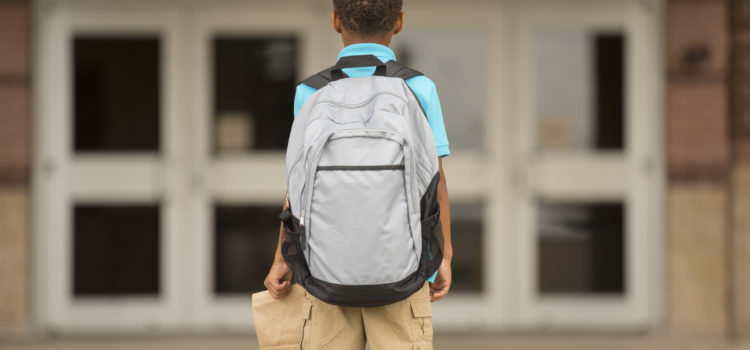Anthony has a backpack. In Anthony’s backpack there are school books, markers, pencils, paper, a binder, calculator and everything else that an elementary school child would need to succeed academically. What you don’t see is the invisible backpack that he also carries. This backpack is far heavier than the one he carries for school because it holds the colossal weight of childhood trauma. This invisible backpack holds the weight of his fears, his difficulties with trust and safety and memories of scary things that have happened to him.
Many of our youth carry an invisible backpack like Anthony. One out of every 4 children attending school have been exposed to childhood trauma that affects their learning and behavior. These traumatic experiences can be the result of intentional violence—such as child physical or sexual abuse, or domestic violence—or the result of natural disasters, accidents, or war. Childhood trauma affects brain development and it is associated with depression, suicide, anxiety, behavioral difficulties, lower GPA and decreased reading ability.
This is not an issue that is unique to someone else’s kid or a few select communities. Surveys of adults reveal that childhood trauma is relatively common. Approximately 14 percent of men and 32 percent of women reported childhood histories of sexual abuse, and 22 percent of men and 19 percent of women reported experiencing physical abuse during their childhood. Childhood trauma affects people of all backgrounds and we all have a role to play in helping our families, communities and institutions respond effectively to the devastating impact of trauma.
How do we repack our invisible backpacks with positive experiences?
It is important to know that there is hope for those who have experienced childhood trauma. If you are carrying your own invisible backpack or if you know others that bear the heaviness of childhood trauma, remember that we are resilient! We can repack the invisible backpacks with positive experiences: healthy relationships, safety and tools to manage uncomfortable emotions.
- Healthy Relationships: We are social beings and we can only thrive, develop and change behavior- positively or negatively- through our relationships. Being harmed and abandoned by the people who are supposed to love you is catastrophic. This is why relationship building is so important in recovery from trauma. What helps folks to recover are the people around them (i.e., parents, teachers, neighbors, friends, etc.) who respect them, love them unconditionally and support them. We must put to rest the belief that being rigid and punitive is helpful to our children. Instead, our interactions with all youth must embody consistent, patient and loving care.
- Safety: Childhood trauma overwhelms a child’s sense of safety and can lead to a variety of survival strategies for coping (e.g., aggression or withdrawing). After traumatic events are over, a child may continue to experience insecurity, both physically and emotionally. They may begin to display uncharacteristic behaviors that their teachers and caregivers don’t understand. It is important to create physical, emotional, mental and relationship safety for those who have experienced childhood trauma.
- Managing Uncomfortable Emotions: Childhood trauma is linked to the dysregulation of emotions and impulses. When working with children who have been traumatized, it is important to teach them healthy ways to manage their emotions. More schools and institutions should embrace mindfulness practices. Additionally, there are a number of trauma informed approaches that can be used with caregivers, teachers and other people working with children that are beneficial, such as Collaborative Problem Solving and the Alert Program.
We all have a role to play and we are all part of the solution. Anyone working with children- parents, social workers, psychologists, psychiatrists, nurses, school teachers, probation officers, child welfare workers, etc. – must become trauma-informed. It is important to recognize the signs and symptoms of trauma and respond by fully integrating knowledge about trauma into policies, procedures and practices in your organization. Let’s make a commitment to positively transform the lives of our youth by increasing our knowledge about trauma and its impact, arming ourselves with ways to provide positive experiences for our youth and integrating healthier practices into all spheres of life so that we can do what adults are meant to do- protect our children!

I believe trauma informed care using relationship building is the foundation of success for everyone. Students (and adults) need to be able to identify when they are triggered and have the skills to respond to upset when it is noticed. There is so much science to support the use of breathing, yogic exercises, tapping, etc. I use these skills in my own life and am excited to teaching them to others.
Absolutely. This is so true. Thank you for your insightful comments. I’m a huge supporter of trauma informed programs